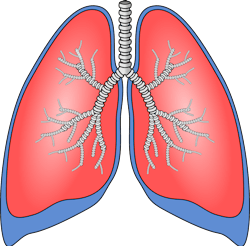Study testing drug to protect lung cells from ARDS in COVID-19
Protruding from the outer shell of SARS-CoV-2, the virus that causes COVID-19, are somewhere between 20 and 40 spikes, proteins that act as keys. The locks they are hoping to pick are the angiotensin converting enzyme 2 (ACE2) receptors on the outer walls of cells in the lungs, heart and other organs, according to a recent study at the University of Alabama Birmingham (UAB).
When a cell's ACE2 receptors are occupied by SARS-CoV-2, levels of angiotensin II surrounding that cell group, which leads to increased calcium entry into that cell. This is particularly problematic in the small airways of the lung, where pulmonary microvascular endothelial cells (PMVECs) rely on precise control of gas and fluid exchange between the lungs and bloodstream for normal breathing. Higher calcium levels make the walls of the PMVECs more permeable, so fluid leaks out of the cells into the surrounding extracellular spaces. This is a primary cause of breathing problems, including acute respiratory distress syndrome (ARDS), seen in patients with severe cases of COVID-19. Up to 30 percent of patients with COVID-19 will develop ARDS.
Fluid leakage, known as extravasation, from PMVECs plays a role in many instances of acute lung injury. Research by Songwei Wu, MD, associate professor in the Department of Anesthesiology and Perioperative Medicine, and Zhen Zheng, MD, an instructor in the department, has focused on the activity of a protein called regulatory myosin light chain (MLC2), which is phosphorylated (altered) in response to rising calcium levels. MLC2 helps maintain the barrier function of endothelial cells, and Wu and Zheng have identified what they believe to be a unique signaling complex between calcium and MLC2 that leads to greater permeability. The researchers also identified a way to interfere with that signal: a drug called penehyclidine, which has demonstrated beneficial effects against acute lung injury in several studies.
As a first step, the researchers will test their hypothesis that Angiotensin II-activated calcium entry into PMVECs promotes phosphorylation of MLC2, with the end result being increased permeability of endothelial cells and the formation of gaps between cells through which fluid can leak out. Then they will test the hypothesis that penehyclidine can decrease this phosphorylation and prevent spike protein-induced acute lung injury.
There are no effective therapeutic treatments available for ARDS, the researchers note, except for mechanical ventilation, which has not been shown to improve patient mortality rates significantly.

